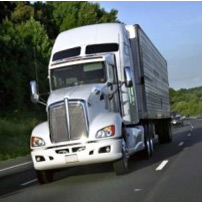Live 24/7 Call Answering: 609-881-1400

Recently, the National Transportation Board and the nonprofit National Safety Council assembled a panel of regulators, manufacturers, fleet owners, technology providers, and insurance experts to come up with ideas on how to implement ADAS technology in heavy-duty vehicles. Many truckers are not aware of exactly what ADAS technology entails, incorrectly assuming it involves a surveillance camera or that it is intended to replace the driver. ADAS technology, such as collision-avoidance systems, actually include features such as forward collision warnings and automatic decreases in speed, should drivers fail to hit the brakes.
Part of the confusion is due to the varying ADAS technologies. Each developer may incorporate different options and therefore, truckers assigned to different trucks on a daily basis may be dealing with various systems. Those who are opposed to ADAS implementation emphasize the need for standardization. Rapid advancements lead to a growing number of options, some of which can be distracting or confusing for drivers.
Opponents also voice concerns over how well the technology will work in older vehicles. Customized vehicles may compromise the performance of ADAS technology by blocking sensors. Also, the technology must be managed and maintained to ensure optimal performance. There are concerns about training and the changing trucker demographics.
Even if ADAS technology is working well, it may still not decrease fatal accidents if drivers do not know how to use it. Employees must be properly trained, but this presents a challenge given the number of different vehicles and ADAS systems drivers may be assigned to. Also, the panel found that because commercial trucks do not require as much manual operation as they had previously, more women and young drivers are joining fleets. One panelist, a supporter of built-in ADAS systems, stated that this new wave of truckers’ ability to be flexible and adapt to new technology is vital for the future.
The trucking industry must decide whether to adopt the new technology or wait until the technology is a standard feature in vehicles. Some truck companies, such as Volvo Trucks North America, have redesigned their trucks to incorporate ADAS technology. Others believe that either the government should offer incentives in exchange for implementation, or regulators should mandate implementation of the technology as part of the truck’s design. The Vice President of Safety, Policy, Connectivity and Technology at the American Trucking Associations Trade Group stated that the level of industry engagement is promising and continues to increase.
If you have been injured in a truck accident, contact a knowledgeable truck accident lawyer in Middlesex County at Davis & Brusca, LLC. We work on all cases as a team and every staff member possesses a commitment to victim advocacy. Our offices are located in Princeton and we represent clients throughout New Jersey, including Middlesex County, Essex County, Hudson County, and Union County. Contact us online or call us at 609-786-2540 to schedule a consultation.